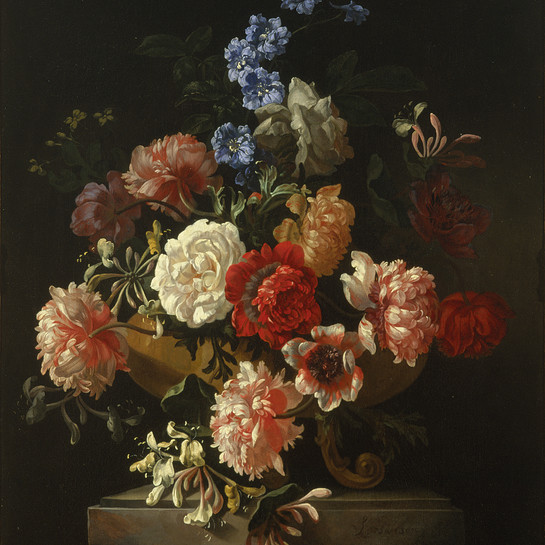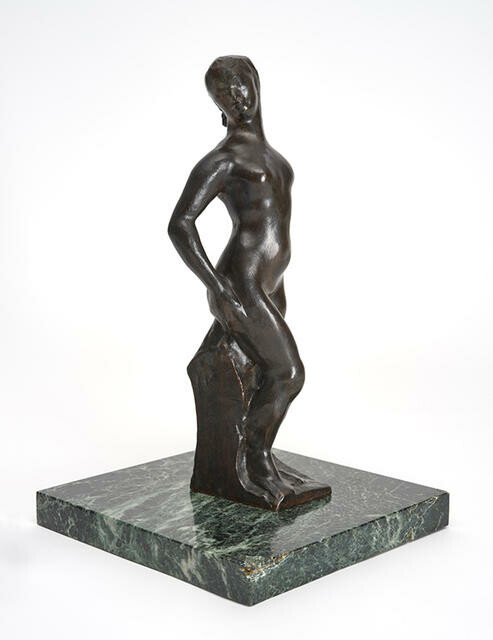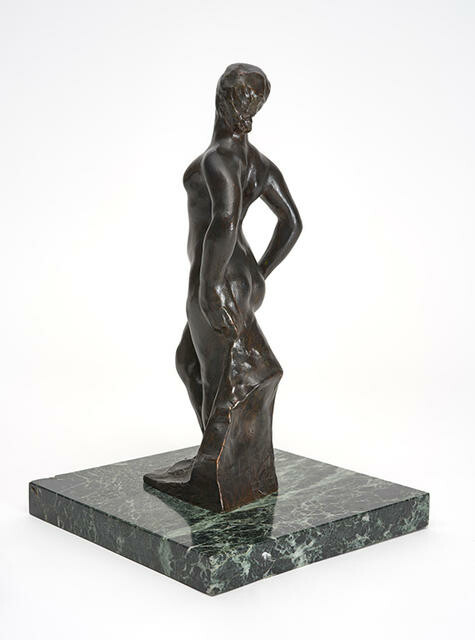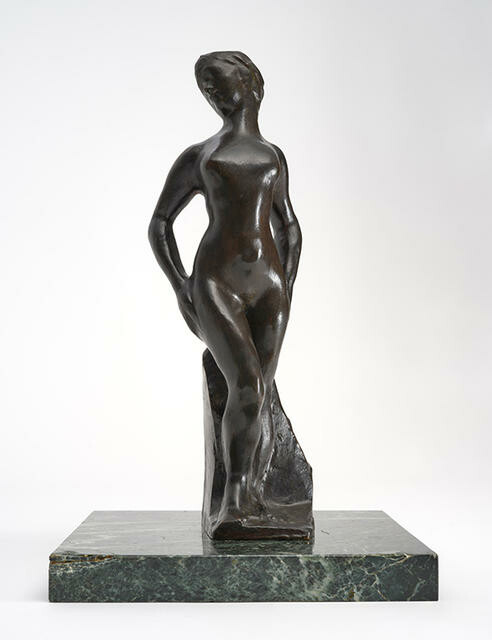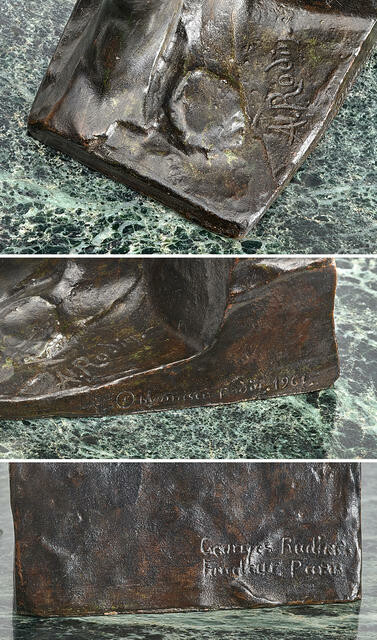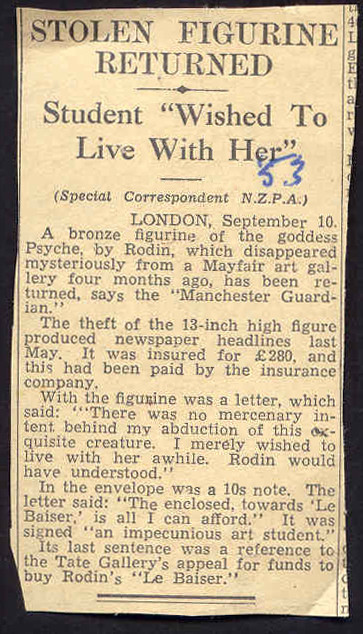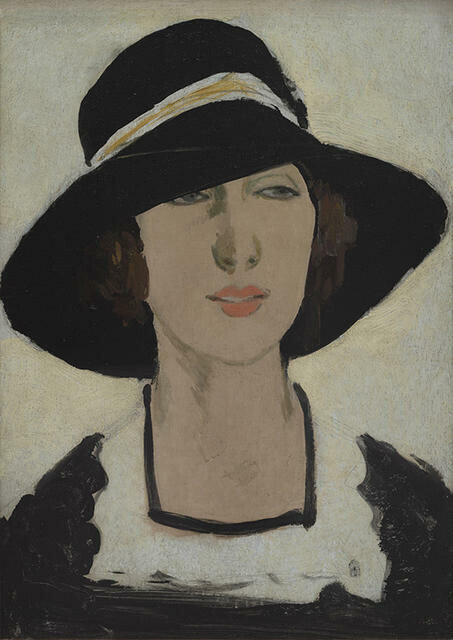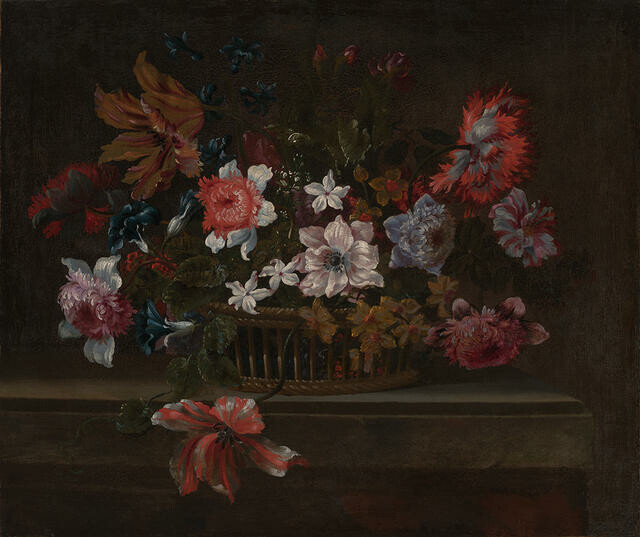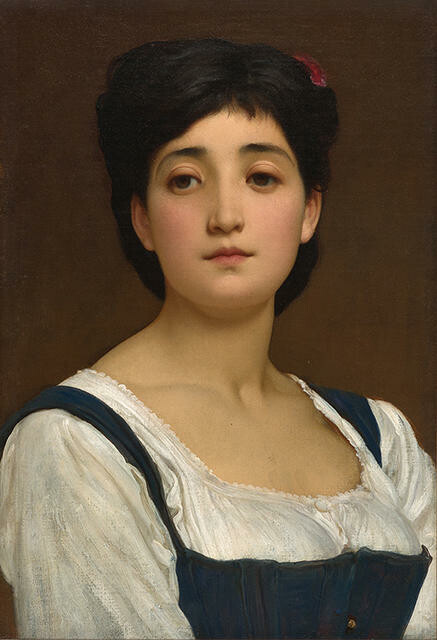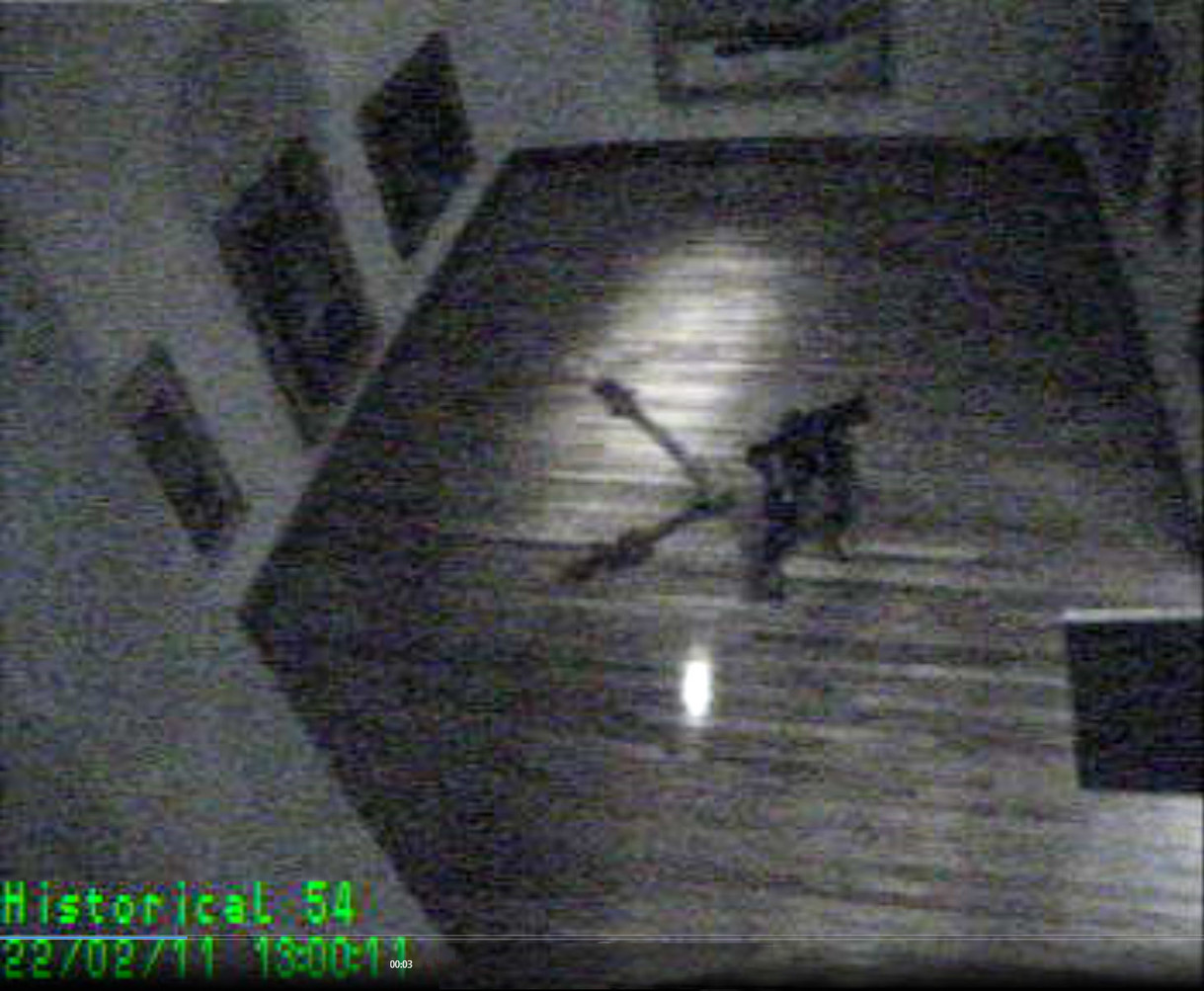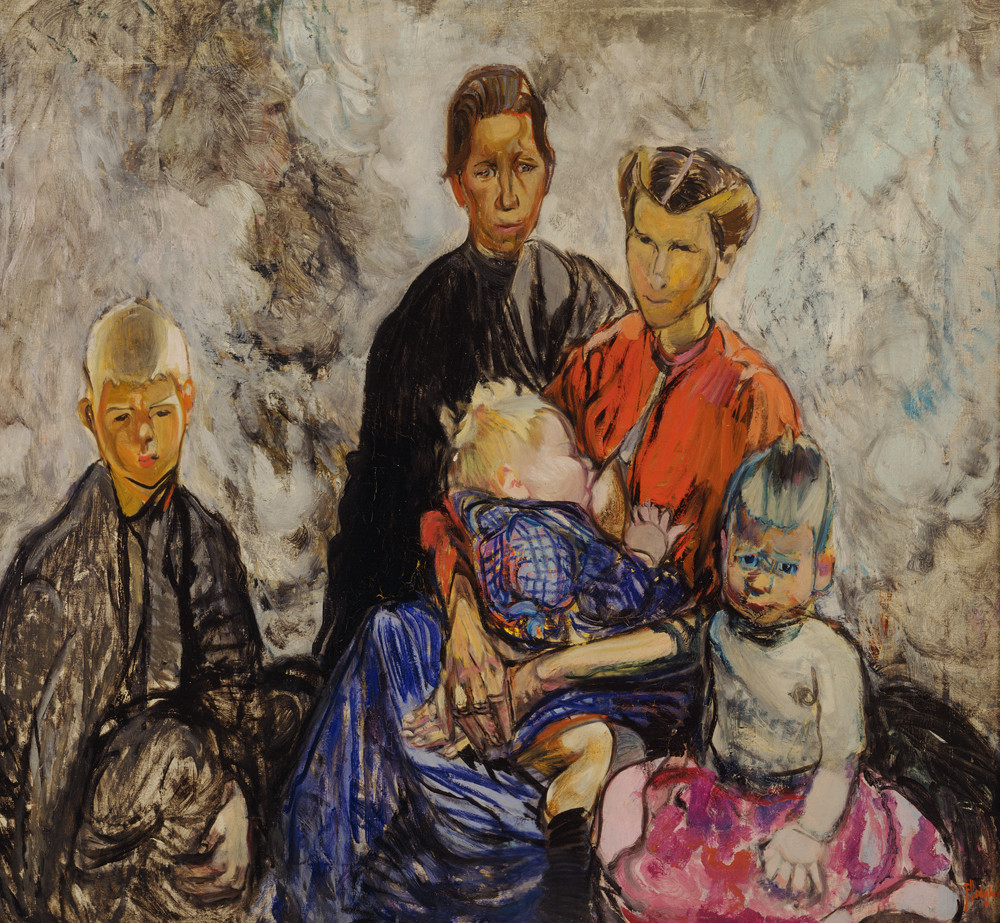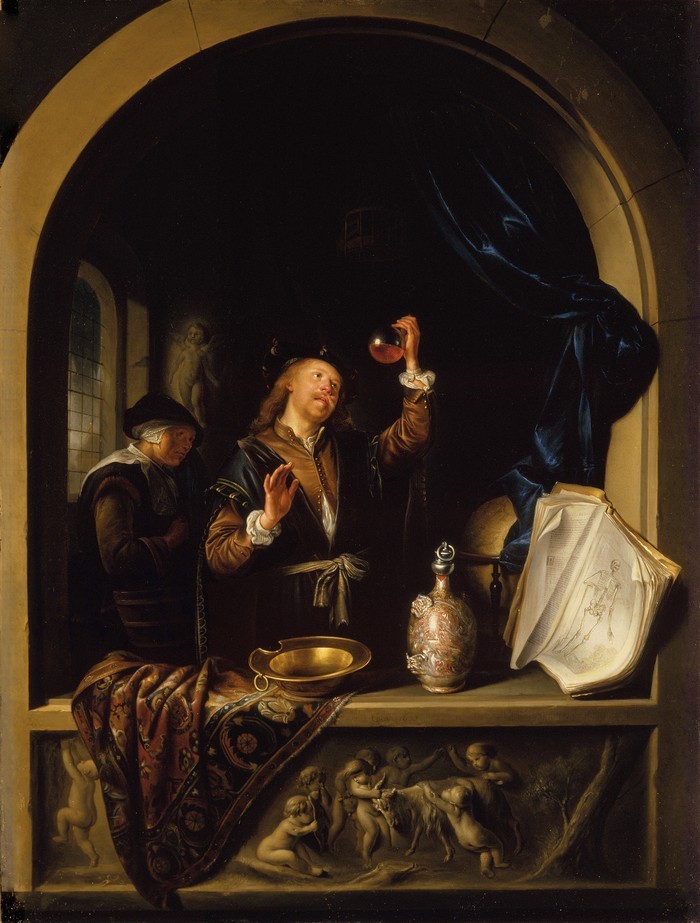Auguste Rodin
France, b.1840, d.1917
Psyche
- 1899
- Bronze
- Presented by New Zealand Government from the NZ Fund For Cultural Development, 1964
- 333 x 110 x 106mm
- 69/528
Tags: figures (representations), mythology (literary genre), nudes (representations), people (agents), women (female humans)
Psyche, in Greek mythology, was a mortal princess whose beauty attracted the attention of Eros, the god of love, and the jealous anger of his mother Aphrodite. The renowned Parisian sculptor Auguste Rodin worked on variations on the theme of Psyche between 1886 and 1905. This bronze is a later casting, produced by the Musée Rodin at a foundry in Paris in 1961.
Psyche was purchased by the New Zealand Government in 1962 through a fund established to strengthen learning and cultural relations between New Zealand and France. After being exhibited in Christchurch in 1963, this city became the sculpture’s permanent home.
(Treasury: A Generous Legacy, 18 December 2015 – 27 November 2016)
Exhibition History
The artist Auguste Rodin was a Parisian. As a boy his ability at drawing was recognised early and he was transferred to an art school. However he was refused admission as a sculpture student by the Ecole des Beaux-Arts and forced to earn a living ornamenting buildings.
In 1871 he worked in Belgium and later in Italy where he studied the work of Donatello and Michelangelo. He settled finally in Paris in 1877 and by 1880 had become renowned for his sculpture portraits of famous contemporary figures. Rodin's fame as a sculptor grew and, in 1882, a studio was freely placed at his disposal by the state. Nearly all Rodin's major works led to controversies. After his death he fell somewhat from favour, until the 1960s when there was a re-assesment of his work which led to a revival of interest.
Psyche, a character from an early Greek tale by Apuleius, was a beautiful young woman. Venus became jealous of her and sent her son Cupid to make her fall in love with an unsightly creature, but Cupid fell in love with her himself. This was one of two bronzes purchased from the New Zealand Fund in France for Cultural Development and gifted to the gallery in 1964. It was issued as part of an edition in 1961 by the Musee Rodin and cast by the George Rudier foundry in Paris. (Label date unknown)
In Greek mythology Psyche was the young woman who was so beautiful she aroused the love of Eros and the jealousy of Aphrodite, his mother, who did her best to make trouble. The couple were eventually united, which can allegorically be seen as the soul and desire coming together through misfortune and achieving happiness. Auguste Rodin worked on sculptural variations of the Psyche myth from 1886 until 1905. His work is impressionistic in its treatment, which differs from the more highly finished sculpture of academic artists. Born in Paris, Rodin was rejected by the École des Beaux-Arts and started working as a moulder, ornamentor and goldsmith instead. He later took lessons from the animal sculptor, Antoine-Louis Barye (1796 -1875), and studied the work of Donatello (c. 1386 -1466) and Michelangelo (1475-1564). By 1880 Rodin had become renowned for his sculptural portraits of famous contemporary figures and in 1882 a studio was freely placed at his disposal by the state. (Label date unknown)
